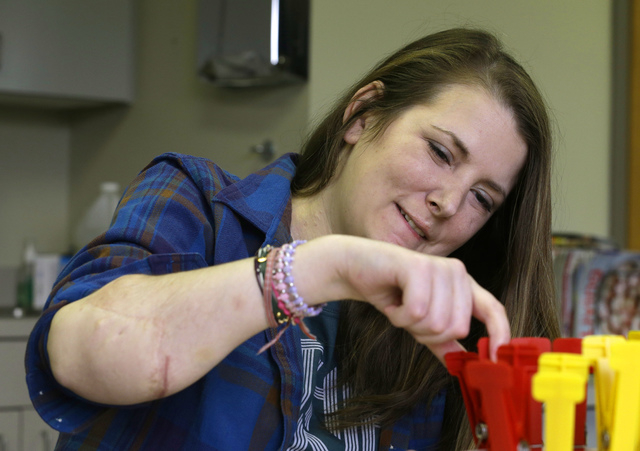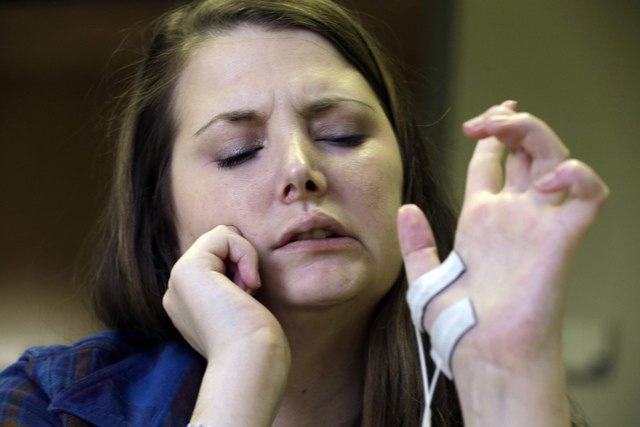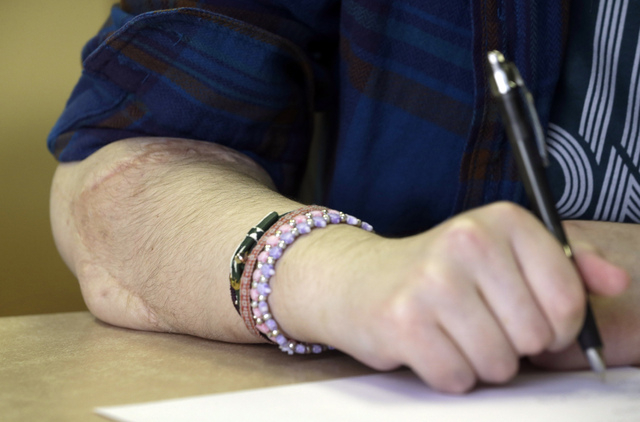Organ donor? Check … Now about your face and hands …



WASHINGTON — Sure your liver or kidney could save someone’s life. But would you donate your hands, or your face? Signing up to become an organ donor may get more complicated than just checking a box on your driver’s license.
The government is preparing to regulate the new field of hand and face transplants like it does standard organ transplants, giving more Americans who are disabled or disfigured by injury, illness or combat a chance at this radical kind of reconstruction.
Among the first challenges is deciding how people should consent to donate these very visible body parts that could improve someone’s quality of life — without deterring them from traditional donation of hearts, lungs and other internal organs needed to save lives.
“Joe Blow is not going to know that now an organ is defined as also including a hand or a face,” said Dr. Suzanne McDiarmid, who chairs the committee of the United Network for Organ Sharing, or UNOS, that will develop the new policies over the next few months.
Making that clear to potential donors and their families is critical — “otherwise we could undermine public trust,” said McDiarmid, a transplant specialist at the University of California, Los Angeles.
“The consent process for the life-saving organs should not, must not, be derailed by a consent process for a different kind of organ, that the public might think of as being very different from donating a kidney or a heart or a liver,” she added.
These so-called “reconstructive transplants” are experimental, and rare. The best estimates are that 27 hand transplants have been performed in the U.S. since 1999, and about seven partial or full face transplants since 2008, said Dr. Vijay Gorantla, medical director of the University of Pittsburgh reconstructive transplant program.
But they’re gradually increasing as more U.S. hospitals offer the complex surgeries, the Defense Department funds research into the approach for wounded veterans — and as transplant recipients go public to say how the surgeries have improved their lives.
“These hands are blessed hands to me,” said Lindsay Aronson Ess, 30, of Richmond, Va., who received a double hand transplant in 2011. She had lost her hands and feet to a life-threatening infection in 2007.
Until now, deciding who qualifies for a hand or face transplant, and how to find a match and approach a potential donor’s family all have been done on an informal, case-by-case basis.
There has been no way to tell which hospitals’ techniques work best and how patients ultimately fare. There have been reports of two deaths related to face transplants in other countries, and some transplanted hands have had to be amputated. Patients must take lifelong anti-rejection medications that put them at risk of infections, cancer and other side effects.
In July, government regulations go into effect making hand and face transplants subject to the same strict oversight by UNOS, which manages the U.S. transplant program, as heart or kidney transplants. They’re part of a new definition of “organ” that also includes other body parts that doctors one day might transplant — from feet to voice boxes, maybe even the uterus. Unlike corneas, heart valves and other simpler tissues that are regulated by the Food and Drug Administration, these are all complex mixes of blood vessels, nerves, muscles and other tissues.
The rules mean potential recipients will be added to the UNOS network, for matching of donated hands and face tissue that are the right tissue type and compatible for skin color, size, gender and age. Transplants and their outcomes will be tracked.
Before then, the UNOS committee will have to decide such things as who’s first on the waiting list, and what special expertise a transplant center needs.
Then there’s the consent challenge. Some specialists say people should receive a list of body parts when they first sign an organ donor card — to specify exactly what they do and don’t want donated at death.
“Ethically it is the right thing to do so the potential donor has a choice,” said Pittsburgh’s Gorantla, who is closely watching how UNOS will tackle this issue.
But UNOS committee bioethicist Robert Veatch of Georgetown University said until now, next-of-kin have decided on donating a loved one’s face or hands, because previously registered organ donors probably had no idea that was an option. That’s even though some state laws preclude family from overriding a relative’s pre-death decision to donate organs or tissues.
“Some people who would be willing to consent to a kidney might get a little squeamish about a face,” he said.
The government projected fewer than two dozen people might be placed on a waiting list for hand and face transplants each year. But Susan Stewart of Association of Organ Procurement Organizations said ultimately, it will increase these transplants because finding a match will be easier.
Hand recipient Ess — the patient voice on the UNOS committee — also wants to ensure potential recipients are fully informed of the rigors and risks.
“It’s not just, ‘Attach some arms and let me go my merry way,’” said Ess, who still requires physical therapy and will always have to watch for signs of rejection. “It takes a lot of patience, it takes a lot of diligence and resilience.”












